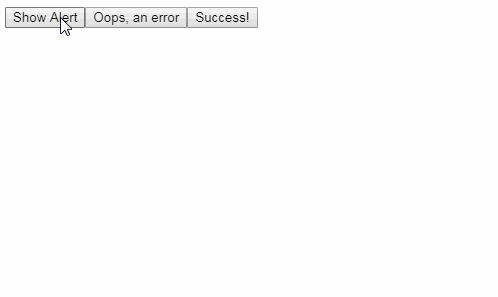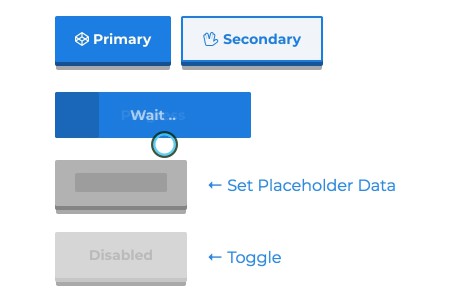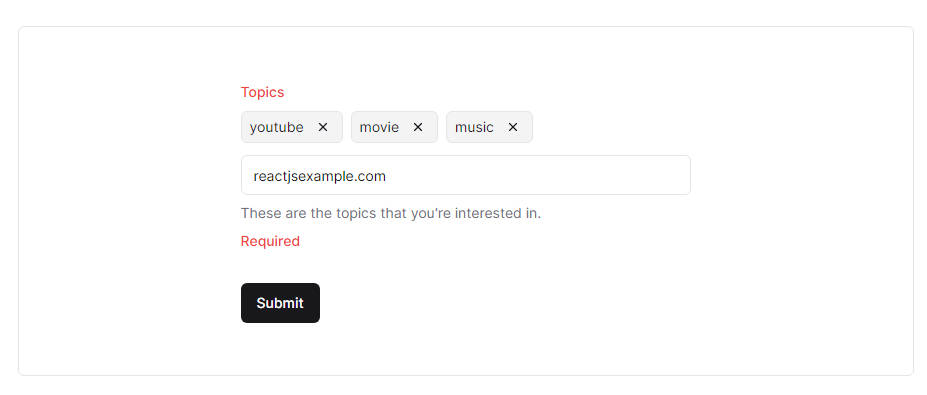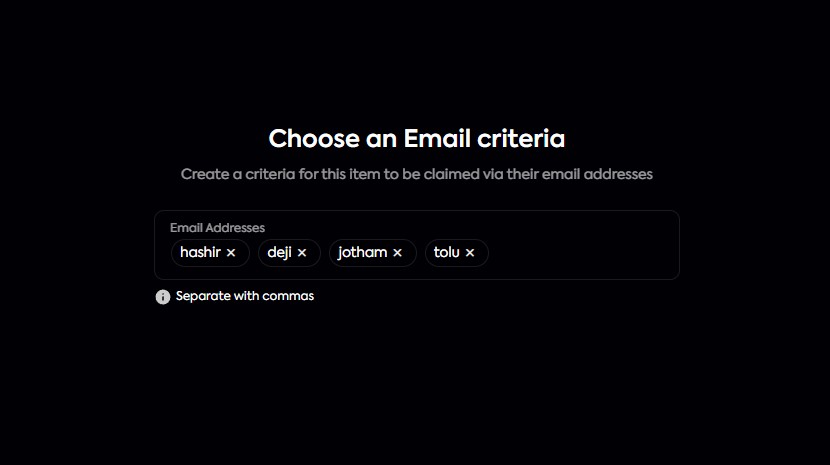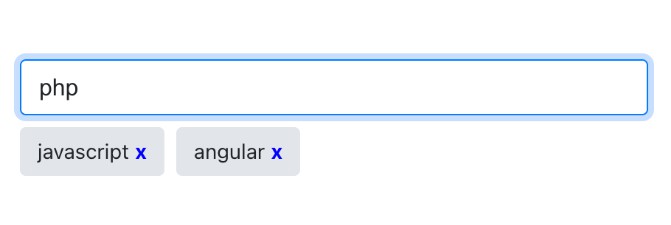Tagify - lightweight input "tags" script
Transforms an input field or a textarea into a Tags component, in an easy, customizable way, with great performance and tiny code footprint.
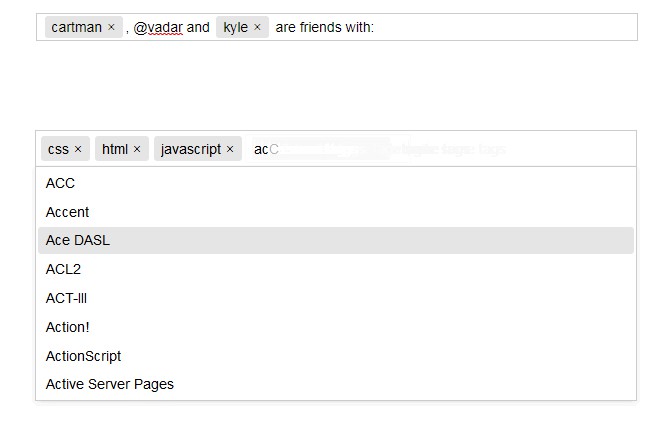
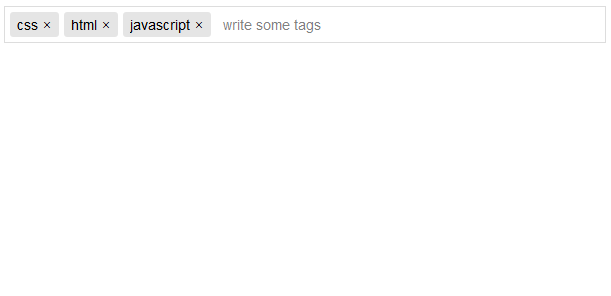
Installation
npm i @yaireo/tagify --save
// usage:
import Tagify from '@yaireo/tagify'
var tagify = new Tagify(...)
Selling points
- JS minified
~17kb(~6kbGZIP) - CSS minified
~5kb(~2kbGZIP) - well-crafted flexible code - Easily change direction to RTL via the SCSS file only
- No other inputs are used beside the original, and its value is kept in sync
- Easily customized
- Exposed custom events (add, remove, invalid)
- Internet Explorer - A polyfill script can be used:
tagify.polyfills.min.jsin/dist
What can Tagify do
- Can be applied on input & textarea elements
- Supports mix content (text and tags together)
- Supports whitelist
- Supports blacklists
- Shows suggestions selectbox (flexiable settings & styling)
- Auto-complete input as-you-type (whitelist first match)
- Can paste in multiple values:
tag 1, tag 2, tag 3 - Tags can be created by Regex delimiter or by pressing the "Enter" key / focusing of the input
- Validate tags by Regex pattern
- Tags are editable
- Supports read-only mode to the whole componenet or per-tag
- Each tag can have any properties desired (class, data-whatever, readonly...)
- Automatically disallow duplicate tags (vis "settings" object)
- Tags can be trimmed via
hellipby givingmax-widthto thetagelement in yourCSS
Building the project
Simply run gulp in your terminal, from the project's path (Gulp should be installed first).
Source files are this path: /src/
Output files, which are automatically generated using Gulp, are in: /dist/
The rest of the files are most likely irrelevant.
Adding tags dynamically
var tagify = new Tagify(...);
tagify.addTags(["banana", "orange", "apple"])
// or add tags with pre-defined propeties
tagify.addTags([{value:"banana", color:"yellow"}, {value:"apple", color:"red"}, {value:"watermelon", color:"green"}])
output value
There are two possible ways to get the value of the tags:
- Access the tagify's instance's
valueprop:tagify.value(Array of tags) - Access the original input's value:
inputElm.value(Stringified Array of tags)
Ajax whitelist
Dynamically-loaded suggestions list (whitelist) from the server (as the user types) is a frequent need to many.
Below is a basic example using the fetch API. I advise to abort the last request on any input before starting a new request.
var input = document.querySelector('input'),
tagify = new Tagify(input, {whitelist:[]}),
controller; // for aborting the call
// listen to any keystrokes which modify tagify's input
tagify.on('input', onInput)
function onInput( e ){
var value = e.detail;
tagify.settings.whitelist.length = 0; // reset the whitelist
// https://developer.mozilla.org/en-US/docs/Web/API/AbortController/abort
controller && controller.abort();
controller = new AbortController();
fetch('http://get_suggestions.com?value=' + value, {signal:controller.signal})
.then(RES => RES.json())
.then(function(whitelist){
tagify.settings.whitelist = whitelist;
tagify.dropdown.show.call(tagify, value); // render the suggestions dropdown
})
}
Suggestions selectbox
The suggestions selectbox is shown is a whitelist Array of Strings or Objects was passed in the settings when the Tagify instance was created.
Suggestions list will only be rendered if there were at least two sugegstions found.
Matching suggested values is case-insensetive.
The selectbox dropdown will be appended to the document's "body" element and will be positioned under the element.
Using the keyboard arrows up/down will highlight an option from the list, and hitting the Enter key to select.
It is possible to tweak the selectbox dropdown via 2 settings:
- enabled - this is a numeral value which tells Tagify when to show the suggestions dropdown, when a minimum of N characters were typed.
- maxItems - Limits the number of items the suggestions selectbox will render
var input = document.querySelector('input'),
tagify = new Tagify(input, {
whitelist : ['aaa', 'aaab', 'aaabb', 'aaabc', 'aaabd', 'aaabe', 'aaac', 'aaacc'],
dropdown : {
classname : "color-blue",
enabled : 3,
maxItems : 5
}
});
Will render:
<div class="tagify__dropdown" style="left: 993.5px; top: 106.375px; width: 616px;">
<div class="tagify__dropdown__item" value="aaab">aaab</div>
<div class="tagify__dropdown__item" value="aaabb">aaabb</div>
<div class="tagify__dropdown__item" value="aaabc">aaabc</div>
<div class="tagify__dropdown__item" value="aaabd">aaabd</div>
<div class="tagify__dropdown__item" value="aaabe">aaabe</div>
</div>
Edit tags
Tags which aren't read-only can be edited by double-clicking them.
The value is saved on blur or by pressnig enter key. Pressing Escaspe will revert the change trigger blur.
ctrlz will revert the change if an edited tag was marked as not valid (perhaps duplicate or blacklisted)
React
react.tagify.js
React component using the Tagify's Wrapper <Tags>:
import { Tags } from '@yaireo/tagify/dist/react.tagify'
// setup some basic Tagify settings object
var tagifySettings = {
blacklist : ["fuck", "shit"]
}
// Demo "App" component that is using the Tagify React component (<Tags/>)
class App extends React.Component {
constructor(props) {
super(props);
tagifySettings.callbacks = {
add : this.onTagifyAdd,
remove : this.onTagifyRemove,
input : this.onTagifyInput,
invalid : this.onTagifyInvalid
}
}
componentDidMount(){}
// callbacks for all of Tagify's events:
onTagifyAdd = e => {
console.log('added:', e.detail);
}
onTagifyRemove = e => {
console.log('remove:', e.detail);
}
onTagifyInput = e => {
console.log('input:', e.detail);
}
onTagifyInvalid = e => {
console.log('invalid:', e.detail);
}
// Render <Textarea> element and applies Tagify on it
render(){
return (
<Tags mode='textarea'
autofocus={true}
className='myInput'
name='tags'
settings={tagifySettings}
initialValue='foo, bar, baz' />
)
}
}
ReactDOM.render(<App />, document.getElementById('app'))
Angular
TagifyComponent which will be used by your template as <tagify>
Example:
<div>
testing tagify wrapper
<tagify [settings]="settings"
(add)="onAdd($event)"
(remove)="onRemove($event)">
</tagify>
<button (click)="clearTags()">clear</button>
<button (click)="addTags()">add Tags</button>
</div>
TagifyService
(The tagifyService is a singletone injected by angular, do not create a new instance of it)
import {Component, OnDestroy} from '@angular/core';
import {TagifyService} from 'ngTagify';
@Component({
selector: 'app-root',
templateUrl: './app.component.html',
styleUrls: ['./app.component.css']
})
export class AppComponent implements OnDestroy {
constructor(private tagifyService: TagifyService) {}
public settings = { blacklist: ['fucking', 'shit']};
onAdd(tagify) {
console.log('added a tag', tagify);
}
onRemove(tags) {
console.log('removed a tag', tags);
}
clearTags() {
this.tagifyService.removeAll();
}
addTags() {
this.tagifyService.addTags(['this', 'is', 'cool']);
}
ngOnDestroy() {
this.tagifyService.destroy();
}
}
jQuery version
jQuery.tagify.js
A jQuery wrapper verison is also available, but I advise not using it because it's basically the exact same as the "normal"
script (non-jqueryfied) and all the jQuery's wrapper does is allowing to chain the event listeners for ('add', 'remove', 'invalid')
$('[name=tags]')
.tagify()
.on('add', function(e, tagName){
console.log('added', tagName)
});
Accessing methods can be done via the .data('tagify'):
$('[name=tags]').tagify();
// get tags from the server (ajax) and add them:
$('[name=tags]').data('tagify').addTag('aaa, bbb, ccc')
Methods
| Name | Info |
|---|---|
| destroy | Reverts the input element back as it was before Tagify was applied |
| removeAllTags | Removes all tags and resets the original input tag's value property |
| addTags | Accepts a String (word, single or multiple with a delimiter), an Array of Objects (see above) or Strings |
| removeTag | Removes a specific tag (argument is the tag DOM element to be removed. see source code.) |
| loadOriginalValues | Converts the input's value into tags. This method gets called automatically when instansiating Tagify |
| getTagIndexByValue | |
| getTagElmByValue |
Events
| Name | Info |
|---|---|
| add | A tag has been added |
| remove | A tag has been removed |
| invalid | A tag has been added but did not pass vaildation. See event detail |
| input | Input event, when a tag is being typed/edited. e.detail exposes the typed value |
| click | Clicking a tag. Exposes the tag element, its index & data |
| edit | A tag has been edited |
Settings
| Name | Type | Default | Info |
|---|---|---|---|
| delimiters | String | "," | [regex] split tags by any of these delimiters. Example: ", |
| pattern | String | null | Validate input by REGEX pattern (can also be applied on the input itself as an attribute) Ex: /[1-9]/ |
| mode | String | null | use 'mix' as value to allow mixed-content. The 'pattern' setting must be set to some character. |
| duplicates | Boolean | false | (flag) Should duplicate tags be allowed or not |
| enforceWhitelist | Boolean | false | Should ONLY use tags allowed in whitelist |
| autocomplete | Boolean | true | Tries to autocomplete the input's value while typing (match from whitelist) |
| whitelist | Array | [] | An array of tags which only they are allowed |
| blacklist | Array | [] | An array of tags which aren't allowed |
| addTagOnBlur | Boolean | true | Automatically adds the text which was inputed as a tag when blur event happens |
| callbacks | Object | {} | Exposed callbacks object to be triggered on events: 'add' / 'remove' tags |
| maxTags | Number | Infinity | Maximum number of allowed tags. when reached, adds a class "hasMaxTags" to <Tags> |
| transformTag | Function | undefined | Takes a tag input as argument and returns a transformed value |
| tagTemplate | Function | undefined | Takes a tag's value and data as arguments and returns an HTML string for a tag element |
| keepInvalidTags | Boolean | false | If true, do not remove tags which did not pass validation |
| backspace | * | true | On backspace: (true) - remove last tag, ("edit") - edit last tag |
| dropdown.enabled | Number | 2 | Minimum characters to input to show the suggestions list. "false" to disable |
| dropdown.maxItems | Number | 10 | Maximum items to show in the suggestions list dropdown |
| dropdown.classname | String | "" | Custom class name for the dropdown suggestions selectbox |
| dropdown.itemTemplate | Function | "" | Returns a custom string for each list item in the dropdown suggestions selectbox |

